
25 Ways to Stay Motivated for Your Indoor Fitness Routine...
Staying motivated for indoor workouts can be tough. Discover these 25 tips and tricks to keep yourself inspired, on track, and committed to your fitness journey.

As a nutrition major, I often offer consulting to people on how to shop for healthy foods at the grocery store and avoid the fake health foods that so often confuse shoppers wanting to eat healthy. It can be a tricky task, let me tell you! I am often so agitated by the health claims on packaged foods today and I used to be a confused consumer myself, until I learned what to look for. If you have ever bought a product, claiming it is healthy for you, yet you don’t see any benefits or promised results, then be warned: most health foods in stores are impostors. Though there are a few good options out there, I’m going to give 7 of the most common fake health foods to avoid, so you can shop a bit smarter next time you’re at the store.
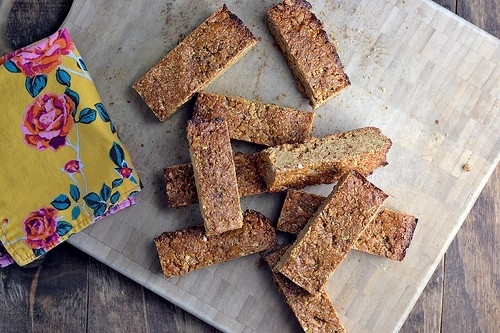 You’ve seen them, and probably bought them, but I’m here to tell you that most protein bars are one of the worst offenders when it comes to fake health foods. Not all brands are bad, such as raw fruit and nut bars, but many such as Slim Fast bars and Clif bars, which appear to be healthy, are loaded with sugar, salt and unhealthy fats. Kit’s Organic bars by the Clif brand are an exception, as are brands like Kind, Larabars and Think Thin bars. Vega One and Amazing Grass also make a good raw protein bar. No matter what the package says on the front, turn it over and read the ingredients. If you see sugar, any type of syrup, cane juice or honey as one of the first ingredients, it’s loaded with sugar. Also, look at the sodium. It should never be more than 200 mg. per bar. Anything else is a salt bomb full of preservatives. Fat grams should be around 10 grams at most, and should never contain the word hydrogenated in the ingredients list. Protein should always come from healthy sources like raw nuts and seeds, quality whey protein or hemp, rice or pea protein.
You’ve seen them, and probably bought them, but I’m here to tell you that most protein bars are one of the worst offenders when it comes to fake health foods. Not all brands are bad, such as raw fruit and nut bars, but many such as Slim Fast bars and Clif bars, which appear to be healthy, are loaded with sugar, salt and unhealthy fats. Kit’s Organic bars by the Clif brand are an exception, as are brands like Kind, Larabars and Think Thin bars. Vega One and Amazing Grass also make a good raw protein bar. No matter what the package says on the front, turn it over and read the ingredients. If you see sugar, any type of syrup, cane juice or honey as one of the first ingredients, it’s loaded with sugar. Also, look at the sodium. It should never be more than 200 mg. per bar. Anything else is a salt bomb full of preservatives. Fat grams should be around 10 grams at most, and should never contain the word hydrogenated in the ingredients list. Protein should always come from healthy sources like raw nuts and seeds, quality whey protein or hemp, rice or pea protein.
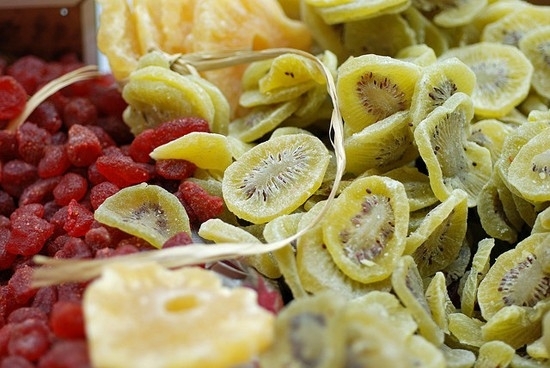 Most people look at me like I’m crazy when I tell them to avoid dried fruit slices. I’m sure you’re thinking, “It’s fruit, so it’s healthy, right?” Wrong, deary! Dried fruit like dried banana slices are often filled with sugar to enhance their taste, plus they lack the water found in fresh fruit. This makes them less filling, which means they don’t fill you up as fast as fresh fruit, so you’re eating more to satisfy your hunger, while also packing on the calories. Dried fruit slices or chips are also usually made with some type of oil to glaze them so they look more appealing. This is never a good thing. When buying dried fruit, buy plain dried fruit, or better yet, buy it fresh. Though there are some brands with just dried fruit as the ingredients, always be sure to read the label to double check. The word natural does not equal healthy either, so don't fall for that easy trap!
Most people look at me like I’m crazy when I tell them to avoid dried fruit slices. I’m sure you’re thinking, “It’s fruit, so it’s healthy, right?” Wrong, deary! Dried fruit like dried banana slices are often filled with sugar to enhance their taste, plus they lack the water found in fresh fruit. This makes them less filling, which means they don’t fill you up as fast as fresh fruit, so you’re eating more to satisfy your hunger, while also packing on the calories. Dried fruit slices or chips are also usually made with some type of oil to glaze them so they look more appealing. This is never a good thing. When buying dried fruit, buy plain dried fruit, or better yet, buy it fresh. Though there are some brands with just dried fruit as the ingredients, always be sure to read the label to double check. The word natural does not equal healthy either, so don't fall for that easy trap!
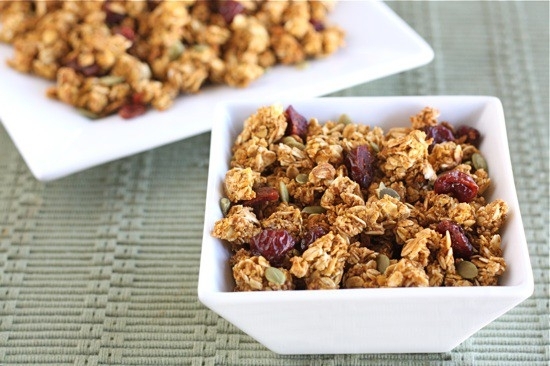 Granola is a popular fake health food, and one of the worst in my opinion. It is often labeled as a heart-healthy snack because it contains oats, but what it doesn't tell you is how the oats are processed and void of nutrients after the final package is produced. Granola is such a tasty treat, most of us just associate the name with healthy and tasty options for snacks. After all, granola is fun to top most anything with, and also just fun to munch on. Avoid store-bought granolas, even if they claim to be healthy. Unless you stick to ¼ cup serving size that most varieties come in, you’re loading up on unnecessary calories. You can easily make your own at home with whole oats, plain dried fruit and your own nuts and seeds. Just mix it with 1 tbsp. coconut oil melted, some cinnamon and 1 tbsp. honey or agave nectar, and the juice from one lemon. Toss to coat and bake on low at 250 degrees for one hour. This will give you your own granola at home without added sugar, salts and unhealthy oils found in store varieties. If you want to purchase some at the store, I recommend sticking to brands that contain sprouted grains and seeds, or just plain, natural ingredients. Don’t trust the package- read the label. You shouldn’t see any ingredient that you don’t recognize or added sugar, salt or fat in the nutrition panel or ingredients list.
Granola is a popular fake health food, and one of the worst in my opinion. It is often labeled as a heart-healthy snack because it contains oats, but what it doesn't tell you is how the oats are processed and void of nutrients after the final package is produced. Granola is such a tasty treat, most of us just associate the name with healthy and tasty options for snacks. After all, granola is fun to top most anything with, and also just fun to munch on. Avoid store-bought granolas, even if they claim to be healthy. Unless you stick to ¼ cup serving size that most varieties come in, you’re loading up on unnecessary calories. You can easily make your own at home with whole oats, plain dried fruit and your own nuts and seeds. Just mix it with 1 tbsp. coconut oil melted, some cinnamon and 1 tbsp. honey or agave nectar, and the juice from one lemon. Toss to coat and bake on low at 250 degrees for one hour. This will give you your own granola at home without added sugar, salts and unhealthy oils found in store varieties. If you want to purchase some at the store, I recommend sticking to brands that contain sprouted grains and seeds, or just plain, natural ingredients. Don’t trust the package- read the label. You shouldn’t see any ingredient that you don’t recognize or added sugar, salt or fat in the nutrition panel or ingredients list.
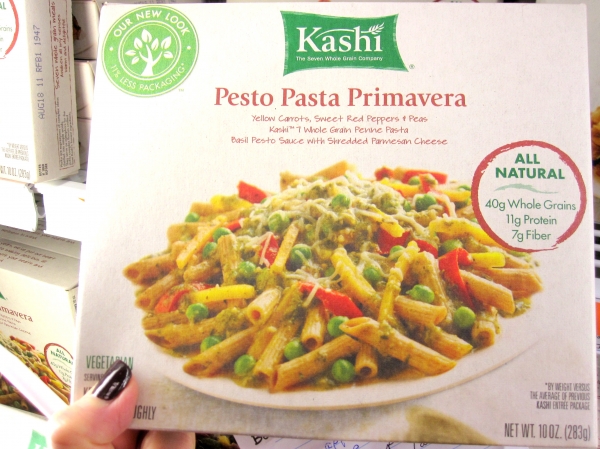 These frozen meals are one of the worst offenders for convincing you that they are healthy for you. First of all, nutrition aside, these are a poor excuse for a meal! They are way too small to be satisfying, and usually smell funny too! Plus, they are filled with preservatives and usually have over half or more of your daily sodium requirements. Don’t buy frozen meals, but instead buy frozen meats, frozen veggies and frozen fruits. These items can easily be prepared into a healthy dish that is far better for you than anything made in a food lab with the words “healthy,” “low-calorie,” “organic,” or “low-carb” stamped on the front.
These frozen meals are one of the worst offenders for convincing you that they are healthy for you. First of all, nutrition aside, these are a poor excuse for a meal! They are way too small to be satisfying, and usually smell funny too! Plus, they are filled with preservatives and usually have over half or more of your daily sodium requirements. Don’t buy frozen meals, but instead buy frozen meats, frozen veggies and frozen fruits. These items can easily be prepared into a healthy dish that is far better for you than anything made in a food lab with the words “healthy,” “low-calorie,” “organic,” or “low-carb” stamped on the front.
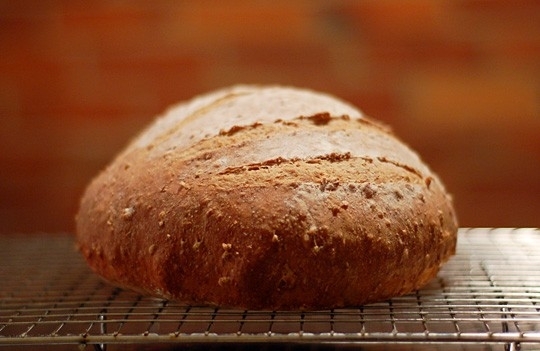 Unless a cereal or bread item says 100% whole grain, then it isn’t whole grain. Even if the package says “made with whole grains,” that doesn’t mean it contains 100% whole grain. Always look for the 100% whole grain stamp on the front of the package. If an item isn’t whole grain, it is nearly as bad for you as the plain white bread you’re trying to avoid. I especially value sprouted grain breads found in the freezer section over all breads, which also come in gluten-free and even yeast-free varieties. These are often referred to as Ezekiel bread and can easily be thawed and kept in your fridge. Since the grains are sprouted, they are full of living nutrients that whole grains are known for, without being overly processed or cooked.
Unless a cereal or bread item says 100% whole grain, then it isn’t whole grain. Even if the package says “made with whole grains,” that doesn’t mean it contains 100% whole grain. Always look for the 100% whole grain stamp on the front of the package. If an item isn’t whole grain, it is nearly as bad for you as the plain white bread you’re trying to avoid. I especially value sprouted grain breads found in the freezer section over all breads, which also come in gluten-free and even yeast-free varieties. These are often referred to as Ezekiel bread and can easily be thawed and kept in your fridge. Since the grains are sprouted, they are full of living nutrients that whole grains are known for, without being overly processed or cooked.
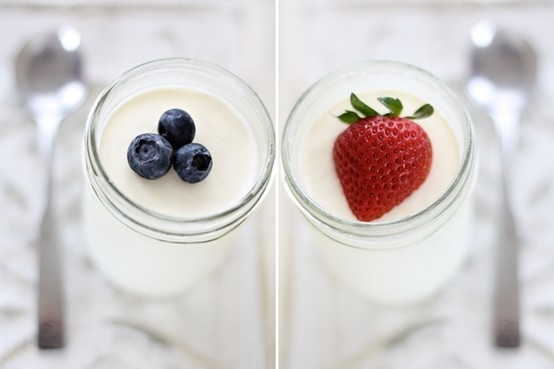 First things first, all yogurt isn’t bad for you. The yogurts you should avoid are those that say “100 calorie,” which technically imply they are diet foods, and though many are fat-free or low in fat, they contain tons of sugar. Most yogurts marketed this way have over 20 grams of sugar! Plain yogurt should only have around 7-10 grams of natural milk sugar in the ingredients list, which is also known as lactose. The only ingredient in the yogurt you need to be eating should be fat-free milk or skim milk, and live active cultures. Don’t buy those flavored varieties that are loaded with sugar. They aren’t healthy, and will only send your blood sugar soaring. Buy the plain varieties and top with berries, a tad bit of honey or even stevia for your own sweet and truly healthy treat.
First things first, all yogurt isn’t bad for you. The yogurts you should avoid are those that say “100 calorie,” which technically imply they are diet foods, and though many are fat-free or low in fat, they contain tons of sugar. Most yogurts marketed this way have over 20 grams of sugar! Plain yogurt should only have around 7-10 grams of natural milk sugar in the ingredients list, which is also known as lactose. The only ingredient in the yogurt you need to be eating should be fat-free milk or skim milk, and live active cultures. Don’t buy those flavored varieties that are loaded with sugar. They aren’t healthy, and will only send your blood sugar soaring. Buy the plain varieties and top with berries, a tad bit of honey or even stevia for your own sweet and truly healthy treat.
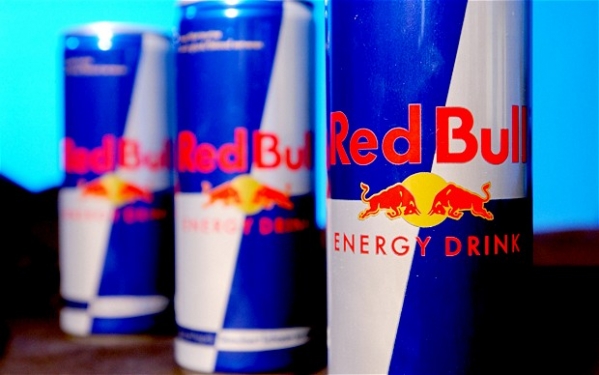 Energy drinks have been popular for years, and many are often marketed as being healthy. Some may claim to be organic, natural, low-carb, filled with vitamins, etc. Just because the package claims it is healthy, doesn’t mean that it will be healthy for you. Avoid energy drinks that contain caffeine, sugar, too much salt, or ingredients you can’t pronounce. My favorite natural energy drink is plain iced green tea with lemon and stevia. It’s tart, sweet and incredibly energizing without containing any added caffeine besides naturally occurring caffeine compounds in the tea leaves.
Energy drinks have been popular for years, and many are often marketed as being healthy. Some may claim to be organic, natural, low-carb, filled with vitamins, etc. Just because the package claims it is healthy, doesn’t mean that it will be healthy for you. Avoid energy drinks that contain caffeine, sugar, too much salt, or ingredients you can’t pronounce. My favorite natural energy drink is plain iced green tea with lemon and stevia. It’s tart, sweet and incredibly energizing without containing any added caffeine besides naturally occurring caffeine compounds in the tea leaves.
Have you ever spotted a fake health food at the store? Speak up! The more we share what we know, the smarter each of us become. Save your money and buy the healthy foods that don’t need a label, such as fresh produce, frozen fruits and veggies, lean meats and organic dairy or dairy alternatives. These foods are great for you and your wallet and don’t need extra marketing; they sell themselves!

Staying motivated for indoor workouts can be tough. Discover these 25 tips and tricks to keep yourself inspired, on track, and committed to your fitness journey.

Learn how to incorporate peaches into your balanced diet in 23 different ways. From breakfast to dinner and snacks in between, enjoy this nutritious and tasty fruit throughout your day.

Make a bold, fashion-forward statement with these iconic looks that capture confidence and style.

Raspberries are not just good for your taste buds; they are also great for your skin and hair. Here are 22 ways that incorporating raspberries into your beauty routine can work wonders.

Starting your day with intentional rituals can set the tone for a healthy and productive day. Discover 15 morning rituals inspired by the simplicity and beauty of nature.

A comparative analysis of yoga and gymnastics, outlining 20 key differences in approach, goals, and benefits, and how each can complement your fitness journey.

Staying hydrated is crucial, especially when working out in open spaces. Learn 25 practical hydration tips to keep you energized and performing your best during your outdoor workouts.

Learn about the surprising connection between a good night's sleep and the health of your hair.

Unearth the deep-seated connections between love and overall wellness, highlighting the health benefits of a loving relationship.

Are you a coffee lover worried about its impact on your health? This blog post will guide you through 20 methods to enjoy your favorite drink while maintaining your wellness, including tips on choosing the right beans, brewing methods, and healthy add-ins.
Sign up for our newsletter.